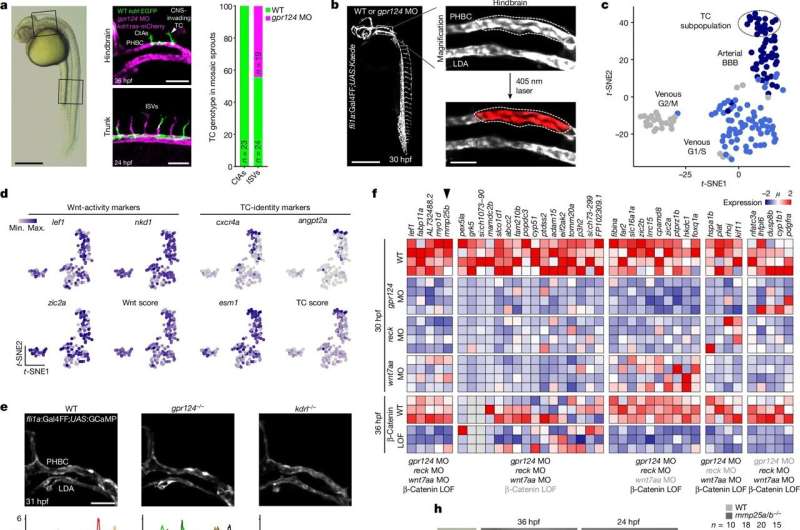This article has been reviewed according to Science X's editorial process and policies. Editors have highlighted the following attributes while ensuring the content's credibility:
fact-checked
peer-reviewed publication
trusted source
proofread
New research explains how brain blood vessels are formed

Cardiovascular diseases, including myocardial infarction and stroke, are the world's leading cause of death, claiming around 18 million lives a year. This observation justifies the adage that you are only as old as your arteries and explains why researchers are working relentlessly to understand how the cardiovascular system develops and functions.
Led by Prof. Benoit Vanhollebeke—Professor at the Department of Molecular Biology, Faculty of Science, Université libre de Bruxelles—a ULB team has just made an important discovery.
Contrary to the generally accepted idea that blood vessels form in a similar way throughout the body, Giel Schevenels and colleagues have discovered that those irrigating the brain obey different, totally unprecedented rules. The researchers discovered that cerebral vessels are equipped with a specific enzyme that is essential for them to invade the brain. Their study is published Nature.
"What I find noteworthy in this study is that the mechanism of brain angiogenesis that we are disclosing simultaneously enables the vessels to acquire specific properties adapted to the neuronal environment, known as the blood-brain barrier. So there seems to be a functional alignment between the very birth of the vessels and their specific functions," explains Vanhollebeke. The blood-brain barrier is a set of characteristics of the brain's blood vessels that strongly limit exchanges between blood and brain tissue. This protects the brain from toxic components circulating in the blood.
"The identification of this mechanism gives us hope that it will one day be possible to develop therapeutic approaches specifically targeting cerebral vessels, which is an important clinical issue in many neurological pathologies," concludes the researcher.
More information: Benoit Vanhollebeke, A brain-specific angiogenic mechanism enabled by tip-cell specialization, Nature (2024). DOI: 10.1038/s41586-024-07283-6. www.nature.com/articles/s41586-024-07283-6



















